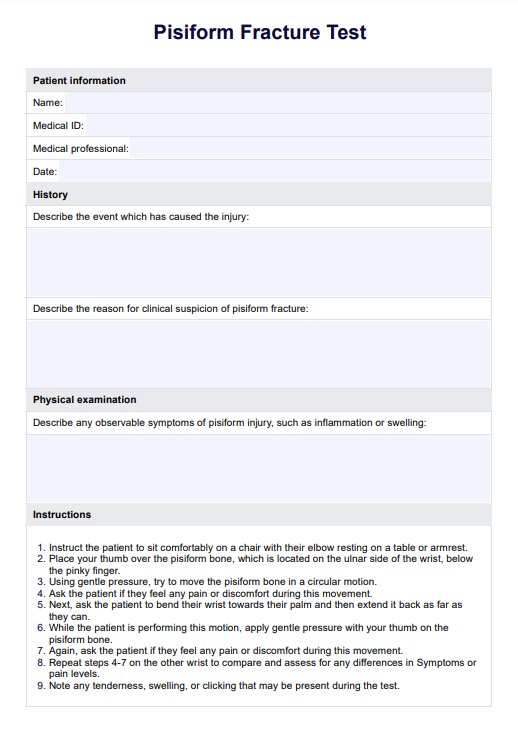Isolated pisiform fractures are rare injuries in which a direct blow or trauma to the wrist causes a break or crack in the small, pea-shaped bone located on the ulnar side of the wrist.

Pisiform Fracture Test
Access an easy-to-use Pisiform Fracture Test template for accurate diagnosis of pisiform injuries.
Pisiform Fracture Test Template
Commonly asked questions
Pisiform fractures are often caused by a direct blow or impact to the palm of the hand, such as during a fall onto an outstretched hand. An acute transverse fracture of the pisiform often occurs alongside other injuries to the carpal bones.
Symptoms may include ulnar sided wrist pain and tenderness, difficulty moving the wrist, and swelling or bruising around the area. Some patients may also experience numbness or tingling in the 4th and 5th fingers, especially if there is concomitant injury to the ulnar nerve. Symptoms often overlap with other types of carpal fractures.
EHR and practice management software
Get started for free
*No credit card required
Free
$0/usd
Unlimited clients
Telehealth
1GB of storage
Client portal text
Automated billing and online payments











